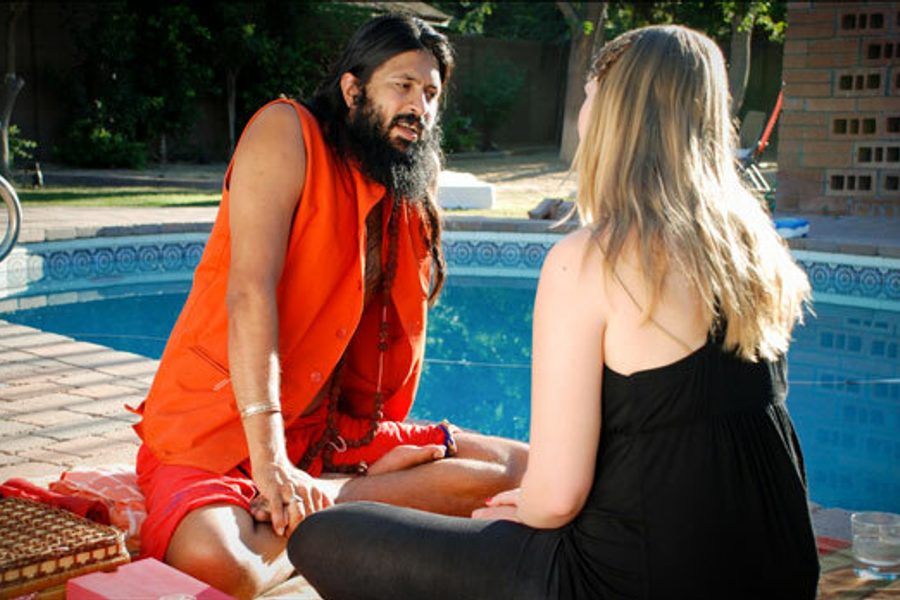Required Viewing: 2011’s Top Political Films
From The Black Power Mixtape to Werner Herzog’s Into the Abyss, here’s what you need to watch now.
Michael Atkinson

Boxing the past year’s best political films is an irritating activity. What is the “best,” anyway? That said, here are the films you shouldn’t miss.
•The Black Power Mixtape 1967-1975
The year’s most ferocious political documentary, Göran Olsson’s found-footage amalgamation is comprised of film shot by Swedish television crews covering activities of black radicals like Angela Davis, Stokely Carmichael and the Black Panthers. This cataract is an awakening to the savage extent to which state power responded to black activism with brute force.
•J. Edgar
This moderately insightful Hollywood biopic should be seen for how small of a deal it makes out of Hoover’s rights-obliterating COINTELPRO juggernaut, in contrast to the hard-bitten reality of Olsson’s film, which makes no bones about who’s to blame.
•Children of Hiroshima
This 1952 film by Kaneto Shindô (screened in the United States for the first time last year) was released in Japan seven years to the day after the bomb dropped on Hiroshima.
After depicting the bombing itself, we leap ahead four years as a young teacher and her acquaintances patiently struggle in the ruins to maintain their lives. Using real radiation-burn victims, Shindô’s movie is as close to a native history of that trauma as will ever be made.
•City of Life and Death
Nobody saw this withering blitzkrieg coming – Lu Chuan’s big-budget, all-Chinese portrait of the rape of Nanking re-envisions the city’s famous holocaust in graphic detail. With its ashen vistas, deep-focus compositions and stone-cold outrage, the film is as purposefully made as, and substantially nervier than, Schindler’s List.
•The Autobiography of Nicolae Ceausescu
Talk about found footage – Andrei Ujica’s three-hour epic is made up of propaganda footage from the erstwhile Communist dictator’s reign, forming a kind of prevaricating daydream-delusion version of Romanian life in the 20th century. Long and appalling and sort of hell to sit through, it’s still vital – every runaway autocracy ought to be given the same archival treatment.
•Essential Killing
Lean and provocative, Jerzy Skolimowski’s newest film takes on the Afghanistan war while doggedly, even perversely, resisting overt politics. It’s an on-location survival saga shot with a recognizable American-indie star (Vincent Gallo, completely sans dialogue) as an Afghan fighter escaping from custody into the Carpathian wilderness, meticulously staged and framed on the razor’s edge between pulp excitement and arty poeticism, but never quite tumbling into either camp.
•Nostalgia for the Light
Chilean documentarian Patricio Guzmán’s new film seems at first blush to detour in an odd new direction – toward astronomy and philosophy, landing in the Atacama Desert, the elevation and absolute dryness of which make it one of the globe’s optimal observatory locations. The nature of time and memory are examined, but soon the desert is also plumbed for its “disappeared” corpses and calcifying human bones.
•Bellflower/Putty Hill
Two of the most startling and resonant American independent films of the year, these seething mini-masterpieces together show the dire state of white 20-something American life as poverty rises and opportunity contracts.
•Into the Abyss
Werner Herzog talks with convicted Texan murderer Michael Perry just days before he is executed in 2010, and explores, in a classic Herzogian way, the lives of the victims’ surviving families and the tendrils of inherited sociopathy running through the generations. Herzog is expressly anti-capital punishment, but his film asks questions that are too big for answers.
•Garbo: The Spy
A ceaselessly inventive and seductive historical doc, Edmon Roch’s espionage ode traces the World War II career of uber-deceiver Juan Pujol Garcia, a Catalan scoundrel who worked for both the Nazis and British intelligence, lying to the Germans so convincingly that he was largely responsible for their ill-preparedness on D-Day. Bustling with film clips, it’s a far more tantalizing vision of Brit spycraft than this year’s Tinker Tailor Soldier Spy.









